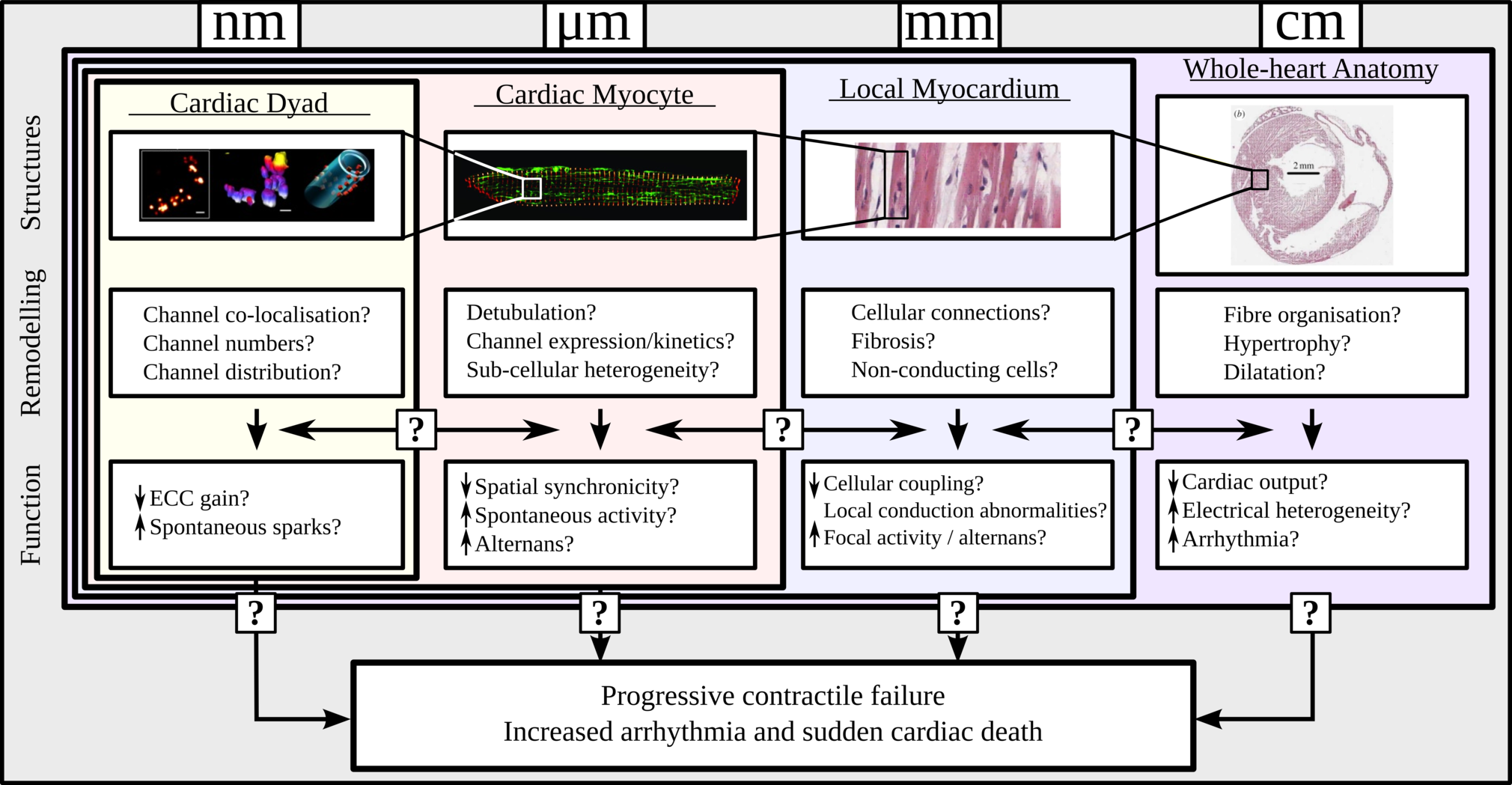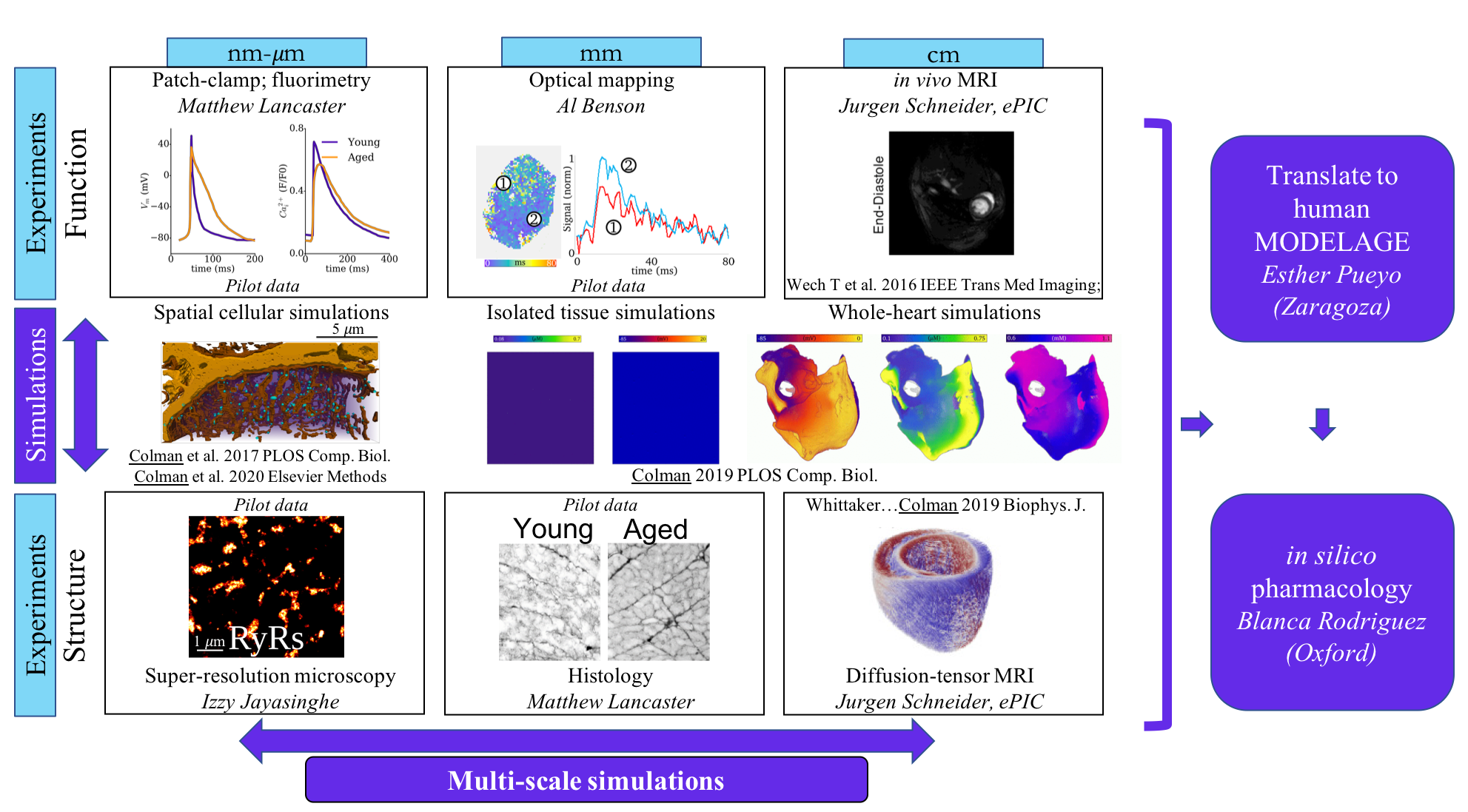Structural remodelling and ageing

Cardiac-ageing is associated with mechanical dysfunction, which reduces the heart’s pumping efficiency and limits daily activities, and an increased vulnerability to arrhythmia,
which can be immediately life-threatening. For example, the incidence of ventricular ectopic excitation, which can act as a trigger for fatal arrhythmia events,
is 17-fold higher in men aged over 60 than those aged 20-40. Remodelling of the structure-function relationships in cardiac cells and tissues can explain both
this mechanical and electrical dysfunction.
A major challenge in dissecting the mechanisms of this dysfunction is that ageing is associated with remodelling of structure-function relationships across multiple spatial scales -
from the sub-cellular nanodomain right up to the whole-heart. It is ultimately the multi-scale interaction of these remodelled structure-function relationships which causes dysfunction.
